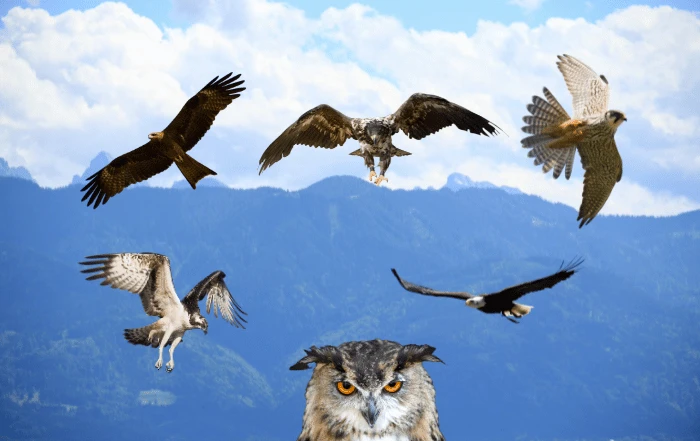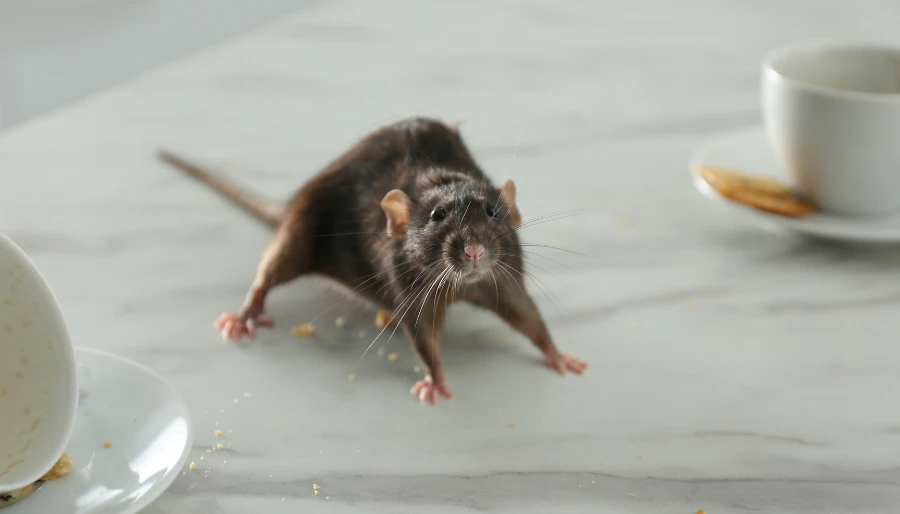A backyard and garden that’s not overrun with insects and animals damaging our plants is every homeowner’s dream. Achieving this without harmful chemicals is an added bonus.
Nature provides us with a great army of beneficial critters that can do this job for us. And we have a wide assortment to help us out from birds, reptiles and amphibians. But you need to create an environment that will encourage them to live there.
You may not find some of these animals appealing, but they are very good at controlling the harmful insects and animals that can cause damage or destroy your garden and yard. Which should make them appealing for that reason alone. You don’t have to pay them, and they don’t use harsh chemicals!
Keep an open mind and follow this guide to help you create an environment that will attract these beneficial animals to protect your yard without the use of chemical fertilizers, pesticides and herbicides.
You can designate one area or multiple areas in your yard as a beneficial wildlife habitat, it’s really all up to you. The species that you will be attracting and types of native plants you should include in your design will depend on your region, as well as how much space you have available. Meaning you’ll have to do some research into your local ecology.
Let’s get to know the critters that can keep your garden and yard free of harmful pests while creating a balanced mini ecosystem.
AMPHIBIANS
To attract amphibians such as frogs, toads and salamanders, you need only three components; water, shade and shelter. These animals require a moist environment for their survival, so providing them with a continual source of water is essential. This can be a natural pond (no filtration, aeration or waterfalls) or a shallow plastic container.
You don’t need a large elaborate set up, it can be as small as 1 square foot, what’s important is that it’s shallow and still. Frogs prefer still, quiet water as well as having some rocks along the sides to provide an easy way to climb out.
There are some videos and instructions available online to help you set up a natural pond. If you go with shallow containers, be sure that they always have water in them and keep them clean.
Whichever water source you choose, it should be placed in a shaded area and not be exposed to direct sunlight. Consider planting ferns, hostas and wildflowers around your water source to add additional shade and shelter.
You will want to place a few toad/frog houses in your shaded amphibian area. These are easily purchased at garden centers or online. Terracotta flower pots work just as well for this.
If using the flower pots, dig a hole big enough for the pot to lay in on its side and place some dirt into the pot to cover the surface and help hold moisture. Lightly mist the inside of the pot anytime you water the yard to keep the house nice and moist.
Adding some loose rocks and mulch will provide your amphibian residents with some additional shelter.
Frogs and toads are active and feed mostly at night, and will seek a moist area to hide during the heat of the day. The more places you give them to hide, the longer you’ll have them keeping the insect population under control.
One frog or toad can eat up to 100 insects every night, so keep these critters happy, and you will have a very capable army working for you.
SNAKES
I know a lot of you are afraid of snakes and the last thing you want is to have them residing in your yard and garden, but they are extremely beneficial to keeping your yard pest free.
So please keep an open mind as you read this section.
Snakes will usually avoid human contact and would rather flee than deal with you, so try to put your fear aside and invite these beneficial predators to your yard. Snakes will eat insects and small rodents that cause damage.
Best of all, unlike an exterminator, snakes are free and fully organic! Offer up a water source and shelter, and they’ll keep your yard and garden free of damaging critters.
You can place a ground level bird bath or a shallow plastic container (dig a hole to place the container in, so it is flush with the ground) as a water source for your snake residents.
You should make sure the container always contains water, and it should be emptied and cleaned regularly to prevent stagnation and bacteria growth.
Snakes will enjoy having bushes and tall grassy areas to find shelter. A wood pile, mulch and rocks are always a welcome source of shelter as well.
Planting ground cover, low growing flowering plants, ornamental grasses and low vines are all beneficial for snakes. Don’t be surprised to see a snake basking in the sun sometimes.
Snakes such as Garter Snakes and Green snakes will eat snails, slugs, caterpillars and other large bugs.
Large Garter Snakes will even eat small rodents.
Snakes such as Rat Snakes, Corn Snakes, Gopher Snakes and Bull Snakes will eat rats, mice, moles and other small rodents.
As long as you make your presence known, your slithering garden protectors will seek another hiding place, and you can both enjoy your yard without frightening each other.
LIZARDS
Lizards require pretty much the same requirements as snakes. They need a steady water source and plenty of shelter.
The types of lizards you may see in your yard will depend on your region, and some areas may not have any lizards at all.
Of course, if your yard is inviting to snakes, it most likely will attract any native lizards as well.
Having a ground level bird bath or a shallow plastic container buried flush to the ground (be sure to place a few rocks along the side, so they may climb out). Be sure that it always contains water and that you clean it regularly to prevent stagnation and bacteria growth.
Planting ornamental grasses, ground cover plants, bushes and shrubs and low growing flowers will give your lizard residents some shelter.
Also, having a wood pile, loose rocks and mulch will provide additional shelter. Lizards will help control damaging insects in your garden and yard, so create an inviting area for these beneficial predators and find fewer bugs harming your plants.
You Put In The Work, Why Not Certify Your Habitat to Help Wildlife & Shame Your Neighbors!
The National Wildlife Federation can certify your habit garden as a haven for local wildlife. The process is straight-forward, simply explain how your yard or garden provides sanctuary through a more natural approach to habitat and get recognized as a Certified Wildlife Habitat®.
The $20 application processing fee and sign purchase both directly support the NWF programs.
INSECT EATING BIRDS
Attracting birds that primarily feed on insects is a great way to control harmful pests in your garden and yard. You just have to add a couple of things to make your place the place to be.
As with all living things, a constant water source is essential. Placing a bird bath in your yard is a critical step. It’s important to keep the bird bath clean to prevent bacteria growth and the spread of disease. You’ll also want to add at least one bird feeder to attract the insect eaters to your yard.
Don’t worry that the insect-eating birds will only eat the seeds. The bird feeder provides them with a supplemental food source that will keep them coming to your yard. The majority of their diet will still be insects.
Placing a few bird houses is also recommended. If you already have trees in your yard, you’re ahead of the game. If not, you might consider planting a few small trees and bushes to provide a place for the birds to perch and nest.
Keeping a variety of wild flowers, ornamental grasses, flowers, herbs and vegetable plants, as well as some fruit bearing bushes will keep the variety of insects the insect eating birds need.
There are several kinds of insect eating birds, the types you will be attracting will depend on your region.
Common Insect-Eating Birds
-
-
- Wrens
- Robins
- Chickadees
- Bluebirds
- Oriels
- Swallows
- Warblers
- Cardinals
- Grosbeaks
- Nuthatches
- Thrushes
- Finches
-
Plants Known To Attract Insect-Eating Birds
-
- Azaleas
- Bee balm
- Cardinal flowers
- Columbines
- Coral bells
- Fox glove
- Jewelweed
- Sage
- Honeysuckle
- Sumac
- Junipers
- Blackberries
- Bayberries
Creating an environment to attract insect eating birds will be beneficial to your garden and yard. And they’re built-in entertainment right in your background.
BIRDS OF PREY

Attracting birds of prey can offer big benefits for your garden and yard. Most importantly, they control the population of small animals that can damage or destroy your garden.
It’s not to everyone’s liking to invite these predators due to the prey they hunt, yes they will hunt rats and mice, but they will also hunt rabbits, gophers, chipmunks, squirrels and other birds. While, this may not be a pretty thought, these predators have to eat too. It’s natural!
The animals they do hunt will cause significant damage to your yard if left unchecked, so they are a benefit.
If you have small pets, be aware and be mindful. Small pets can easily become a meal for a large raptor.
Birds of prey will need a bird bath. It’s always important to clean the bird bath at least every other day to prevent bacteria growth and disease transmission. Also, keep it full.
Trees are also an essential to have in your yard for the birds to perch in. Of course, they’ll perch on fence and deck rails as well.
In terms of hunting ground, they prefer open areas where it’s harder for their prey to hide. So a heavily planted yard will probably not attract the larger raptors. They most likely will be more inclined to visit homes in rural areas with plenty of old growth trees. So don’t be disappointed if you don’t see any birds of prey if you live in the city and trees are sparse, it’s not impossible, but it’s less likely.


















